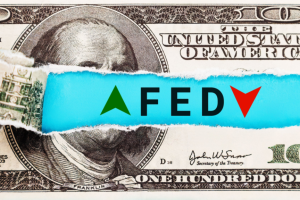
Hello, Reader.
In a recent Smart Money, I discussed how artificial intelligence has both creative and destructive possibilities. (You can read more about that below.)
However, it is certainly not the first technology to introduce such a dichotomy. Many technological innovations through the ages have bestowed widespread benefits, but not without also causing a dose of upheaval.
For instance…
- The lightbulb was one of the greatest inventions of all time, but it did no favors for the kerosene lamp industry.
- The automobile revolutionized transportation, but it also nailed the coffin shut on the saddlery and blacksmith industries.
- The railroad ended the Pony Express. Later, the airplane ended numerous railroad companies.
- The VCR ushered many movie-theater chains into bankruptcy. Then, streaming services steered the video-rental industry in the same direction.
Like some of these technological advancements, AI will certainly create new generations of millionaires and billionaires, perhaps even the world’s first trillionaire… but it will also destroy jobs across the entire socioeconomic spectrum – from warehouse workers and truck drivers to accountants and lawyers.
Amazon.com Inc. (AMZN), for example, is actively developing AI-enabled robotics in its warehouses to perform tasks that humans currently do. While Amazon asserts that its AI-powered endeavors will create over “700 new categories of jobs,” the giant logistics firm has laid off about 27,000 workers during the last two years.
It’s important to understand that exponentially improving technology has a habit of sneaking up on us and changing the world as we know it. This is especially true now that artificial intelligence is thrusting its tentacles into almost every aspect of human life.
As AI expands its reach, we investors must continuously examine both the opportunities and the hazards it will create for various industries.
Today, let’s take a look at one company that seems particularly vulnerable to AI’s expanding presence in the global economy…
Once upon a time, Shutterstock Inc. (SSTK) was a cutting-edge graphics company with a massive, and valuable, library of proprietary images. Today, that library looks more like an anvil than a pair of wings.
Thanks to generative AI technologies like OpenArt, “proprietary graphics” are nearly a thing of the past. On demand, OpenAI’s art generator can create a limitless array of “proprietary” images from scratch. The “Firefly” image generator from Adobe Inc. (ADBE) also produces images instantly, just by converting written text into an image.
Rapidly improving AI – and eventually artificial general intelligence (AGI) – will only expand on these capabilities.
Because of these competitive threats, subscriber “churn” is increasing at Shutterstock. As a result, gross margins and net income are both collapsing. During the last nine months, the company’s trailing 12-month net income tumbled from $118 million to just $47 million. These declining fortunes reflect declining demand for the company’s core content library.

Not surprisingly, the company is attempting to integrate generative AI features into its platform as quickly and as comprehensively as possible. But I believe that effort will be a losing battle, at least from the standpoint of generating long-term profit growth.
According to the consensus of Wall Street analysts, Shutterstock will earn $1.90 a share this year and $3 next year. But both of those estimates are far below what analysts were predicting two years ago. I expect these estimates to continue falling, as AI art generators take ever-larger bites out of Shutterstock’s business model.
Though we can’t predict artificial intelligence’s rapid evolution or its future impacts, there are steps we can take today to help futureproof ourselves for the changes to come.
AI will not automatically halt the growth potential of Shutterstock, but it will certainly toss boulders on the path. Therefore, I suggest shopping elsewhere.
And for every stock or fund you shop for, it’s also important to have a solid exit strategy in place. Something based on math and data, not emotion.
Which is why I want to direct your attention to a discussion that I had the other night. I sat down with a special guest who revealed a powerful tool that could help you determine an optimal time to sell those stocks who reveal their “dark side.”
You can watch our video conversation now.
Today is the last day to secure a 90-day trial, so be sure to act fast.
Now, let’s look at what we covered here at Smart Money this past week…
Smart Money Roundup
This May Be Your Most Important Decision for Every Investment

After the Federal Reserve cut key interest rates by 0.5%, Treasury yields fell, and the stock market hit new record highs the following day. While this is bullish news for all sorts of investments, there is still uncertainty ahead. In that case, an exit strategy is necessary. Click here to continue reading just how critical it is.
The Move to Make After Musk’s Device Scores “Breakthrough” Status

Elon Musk’s Neuralink brain-computer interface (BCI) device “Blindsight” has officially received the U.S. Food and Drug Administration’s “breakthrough device” designation. According to Musk, the device aims to restore vision, including in patients “who have lost both eyes and their optic nerve.” For more on what exactly the FDA’s designation means, and how you can profit from the company’s continued success, click here.
Everyone Hates This Stock, but It Could Become the Next AMD

Back in 2007, AMD found itself in financial trouble, and the financial crisis at the time only made it worse. Then, CEO Hector Ruiz made a decision critical to AMD’s health: splitting the company in half. This success story is one of the reasons we continue to like one of the most hated stocks in the market. Here’s our case for it.
Why You Should Embrace AI’s Progress Despite Its Dark Side

One thing is for certain when it comes to artificial intelligence: There’s no going back to the way things were. As this new reality has entered into a limitless, ever-expanding universe of possibilities – and plenty of screw-ups along the way – this Smart Money issue explains why we should embrace this trial-and-error process.
The Best Tool to Find Growth Stocks

The 2,500-year-old “The Tortoise and the Hare” fable has more to do with stock investing than you think. It’s simple: When you’re a growth investor, the last thing you want to be is the hare. You neither want to hit the snooze button when the market steadily rises, nor have a rash reaction because of a blip in the market. Luckily, Louis Navellier’s newly refurbished Stock Grader tool will help you channel the patient tortoise. Click here to learn what it’s all about.
Looking Forward to Elon Musk’s Robotaxi
Now, I want to circle back to AI… because Tesla Inc. (TSLA) CEO Elon Musk is set to reveal his “Robotaxi” at an October 10 event. It’s a fully automated car with no mirrors, no pedals, and no steering wheel.
The era of autonomous vehicles is finally upon us… whether we like it or not. And that means we want to find ways to profit on it.
So, we’ll be diving deeper into this topic in the next week or so… and I’ll also share how you can gainfully navigate your portfolio through Musk’s dream of a driverless world.
Stay tuned.
Regards,
Eric Fry
Editor, Smart Money




